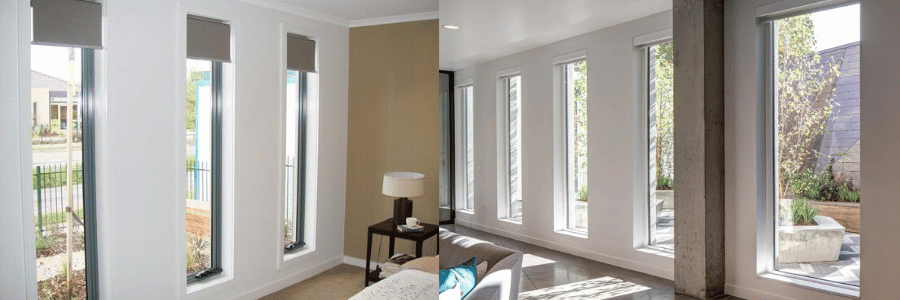When it comes to home design, windows are often one of the most overlooked elements—yet they have a significant impact on the aesthetics, functionality, and overall feel of a space. While traditional horizontal windows are common, vertical windows are making a comeback, offering a modern and dynamic alternative that can transform your home. These tall, slender windows provide a striking focal point in any room, whether used to frame a breathtaking view or as part of a contemporary design statement.
We’ll explore how vertical windows can elevate your home’s design, maximize natural light, and create a sense of height and openness in both large and small spaces. Let’s dive into the benefits and design ideas for incorporating vertical windows into your home.
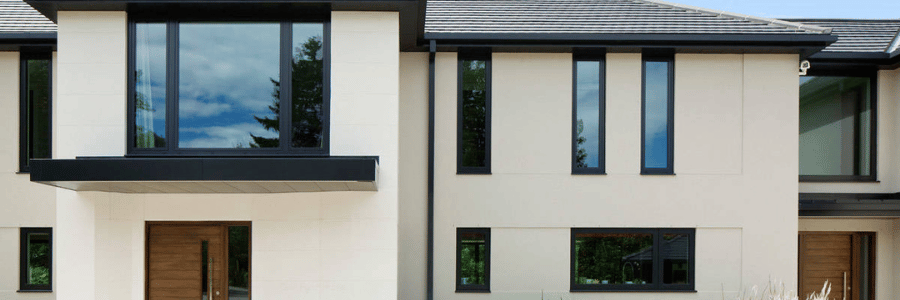
What Are Vertical Windows?
Vertical windows are taller than they are wide, often running from floor to ceiling or spanning a significant portion of a wall. They can be single windows or grouped together to form large, expansive glass walls. Vertical windows are often used in contemporary, modern, or minimalist home designs, but they can work in nearly any style when paired with the right architectural elements.
These windows come in a variety of materials, including wood, vinyl, aluminum, and fiberglass, and can be customized with a range of finishes, frames, and glass types. Whether you’re looking for a sleek, clean design or something more dramatic, vertical windows offer versatility and style.
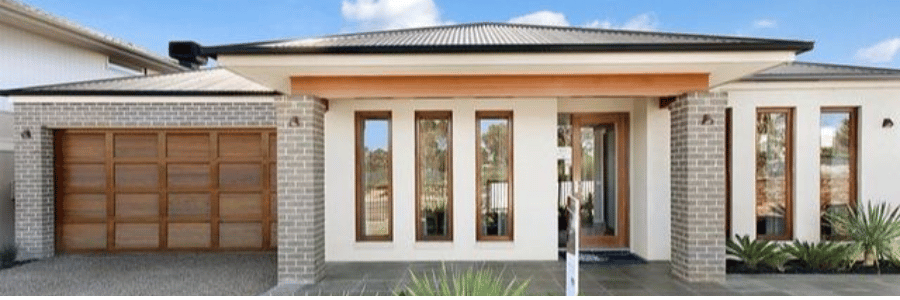
1. Maximizing Natural Light
One of the most significant benefits of vertical windows is their ability to maximize natural light. Tall windows allow sunlight to pour into the space from top to bottom, filling rooms with an abundance of light and creating a bright, airy atmosphere. This is especially valuable in spaces that don’t have much access to natural light, like narrow hallways, stairwells, or basement rooms.
Design Tip: If you have a north-facing wall, vertical windows are a great way to bring light into a room without the harsh heat of direct sunlight. In contrast, if you’re looking to maximize sunlight during the winter months, vertical windows on a south-facing wall can provide much-needed warmth.
The abundance of natural light can have several positive effects: it can make a space feel larger, improve your mood, and even reduce the need for artificial lighting, which can lead to energy savings over time.
2. Creating a Sense of Height and Spaciousness
Vertical windows can dramatically alter the perceived size of a room. By drawing the eye upward, they create a sense of height and openness, making rooms feel more expansive. This can be especially beneficial in homes with lower ceilings or smaller spaces that might otherwise feel cramped or closed in.
Design Tip: Pairing vertical windows with high ceilings or open-plan spaces enhances the effect of height and adds to the feeling of spaciousness. In a living room or dining area, vertical windows can turn an otherwise average room into a striking, grand space. They also work well in staircases, loft spaces, or attics to enhance the verticality of the space.
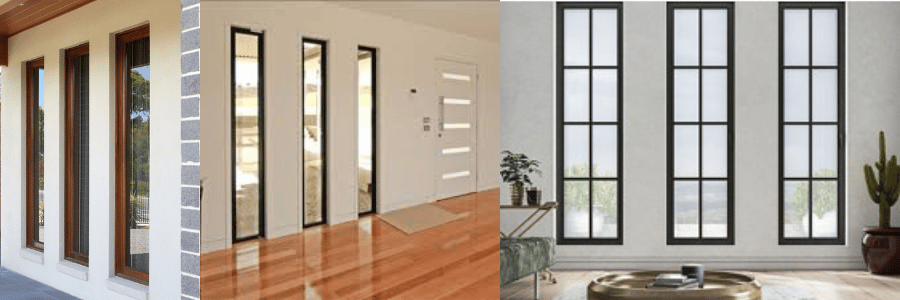
3. Framing Beautiful Views
If your home is surrounded by beautiful outdoor landscapes or picturesque scenery, vertical windows can frame those views perfectly, allowing you to enjoy them from the comfort of your home. Whether it’s a garden, cityscape, mountains, or ocean, vertical windows act as large, elegant frames for nature’s beauty.
Design Tip: Place vertical windows where you can enjoy the changing outdoor environment throughout the day, such as in a living room, dining room, or kitchen. For even more dramatic effect, consider floor-to-ceiling windows in areas like a living room or master bedroom. These types of windows create a seamless connection between the interior and exterior, making your view feel like an extension of the room.
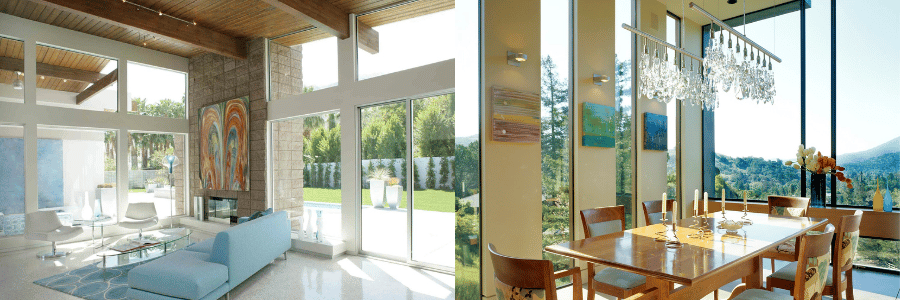
4. Modern Aesthetic and Architectural Statement
Vertical windows are synonymous with modern design. Their sleek, clean lines and tall proportions make them a bold architectural statement, drawing attention and adding an element of sophistication to your home. If you’re looking to create a contemporary or minimalist feel, vertical windows can be a key design element that elevates the overall aesthetic.
Design Tip: Use vertical windows in high-traffic or focal areas, such as the entryway, living room, or open-concept kitchen. These spaces benefit from the dramatic height that vertical windows provide. You can also incorporate vertical windows as part of a larger glass wall system, which is especially effective in modern homes with open floor plans.
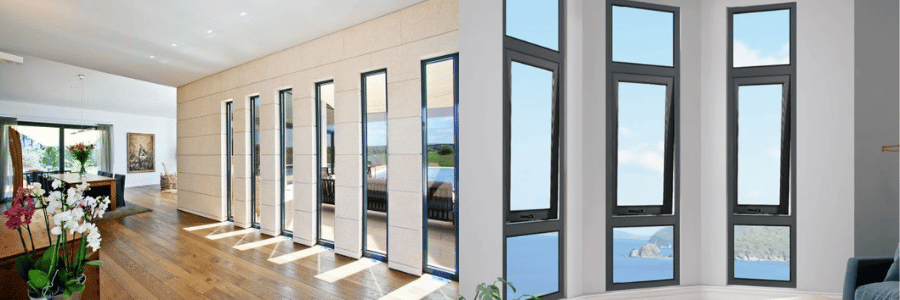
5. Improved Ventilation
Vertical windows are also functional when it comes to ventilation. Taller windows, particularly ones that open, can allow for better airflow and cross-ventilation. Because of their height, they can allow warm air to rise and escape at the top of the window, while cooler air enters through lower openings, helping to regulate the temperature inside.
Design Tip: Install operable vertical windows in spaces like kitchens, bathrooms, or attic rooms where ventilation is essential. Vertical windows are also ideal for creating airflow in large, open spaces, such as a great room or living area, where natural ventilation can complement your home’s heating and cooling system.
6. Energy Efficiency
While vertical windows allow for abundant natural light, they can also be designed with energy efficiency in mind. Advanced double-glazed or triple-glazed vertical windows help regulate the temperature inside, reducing the transfer of heat during the summer and preventing cold air from escaping during the winter. Choosing windows with a Low-E (low emissivity) coating can further improve thermal insulation.
Design Tip: To maximize the energy efficiency of vertical windows, consider installing energy-efficient glazing or shading systems such as motorized shades or blinds that can be adjusted to control sunlight intake. This will allow you to benefit from the natural light without sacrificing energy savings.
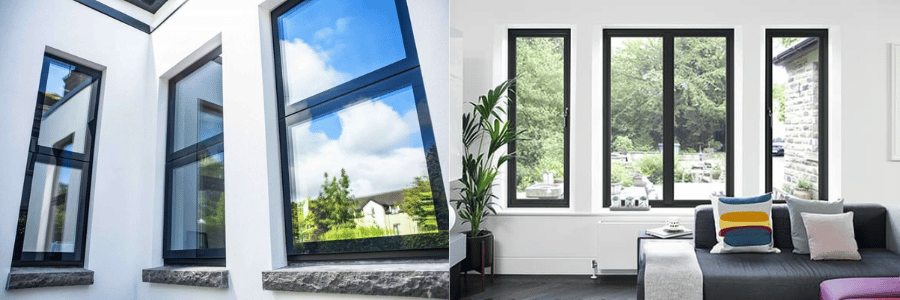
7. Customizable Design Options
Vertical windows come in a wide range of customizable options, making them suitable for almost any design scheme. Whether you prefer a traditional, elegant frame or a sleek, frameless look, vertical windows can be tailored to fit the exact style and aesthetic of your home. They can be designed to fit specific wall sizes, opening types, and frame materials, allowing you to create a truly custom look.
Design Tip: For an ultra-modern look, consider frameless vertical windows that blend seamlessly into the wall. Alternatively, more traditional styles with wood or metal frames can complement classic or transitional home designs.
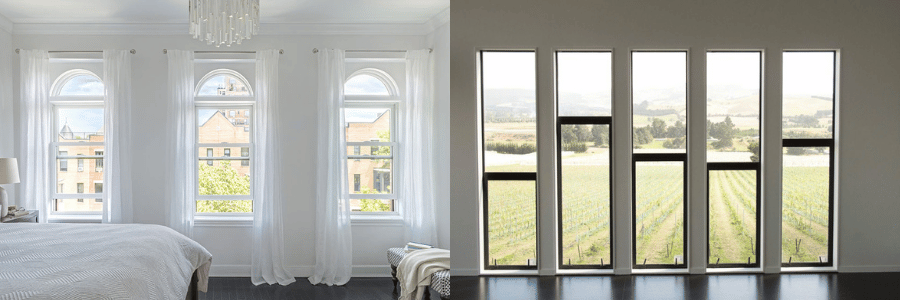
8. Ideal for Narrow or Tight Spaces
While vertical windows are often associated with large, expansive spaces, they can also work wonders in smaller or more narrow rooms. By emphasizing height over width, vertical windows allow light to flood into spaces that might otherwise feel confined. This makes them an excellent option for narrow hallways, bathrooms, or staircases where traditional horizontal windows might be too bulky or out of place.
Design Tip: In narrow or small spaces, a row of vertical windows can make the area feel larger and more open. Even in a small room, the tall proportions of vertical windows will draw the eye upward and make the space feel more expansive.

Final Thoughts
Vertical windows are more than just a functional design element; they are a statement of modern, sophisticated living. Whether you’re looking to brighten up your home with natural light, create a sense of height, frame stunning views, or simply enhance the overall architectural appeal of your space, vertical windows offer a variety of benefits that can elevate any room.
From their ability to improve privacy and ventilation to their stunning aesthetic impact, vertical windows are an investment that brings both style and functionality to your home. If you’re considering incorporating vertical windows into your next home renovation or new build, be sure to consult with an architect or window professional to explore the best options for your specific needs.
By embracing the elegance and versatility of vertical windows, you can turn your home into a contemporary masterpiece that maximizes light, space, and beauty.

